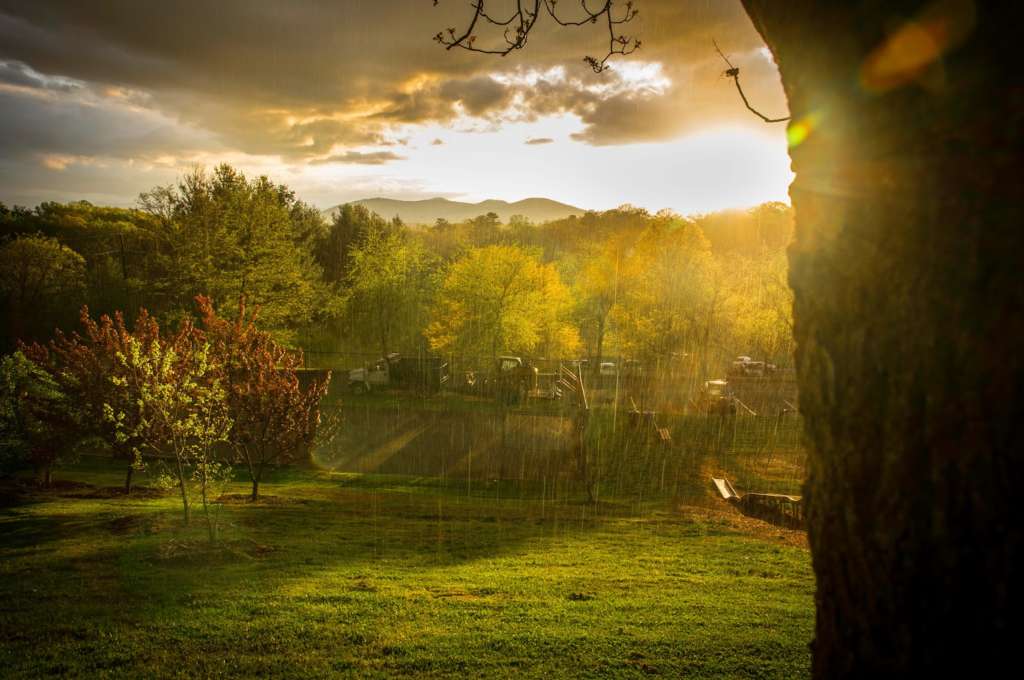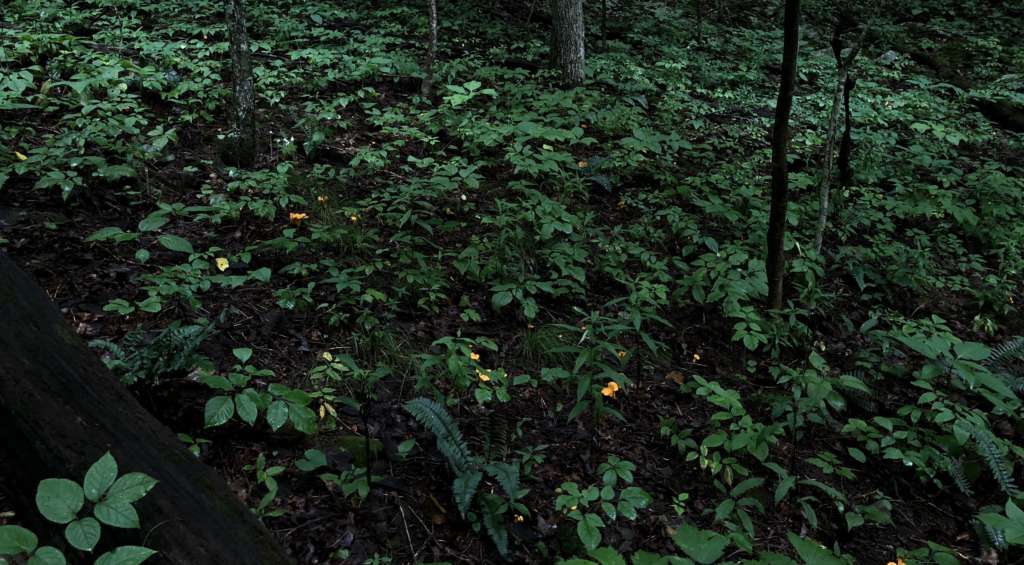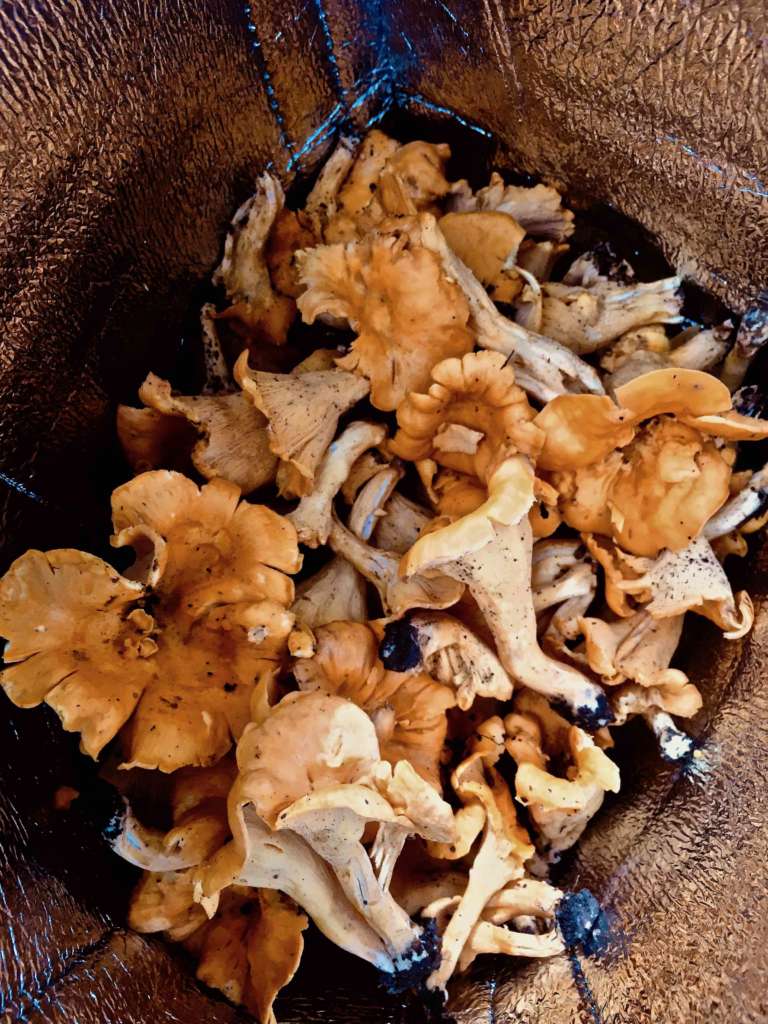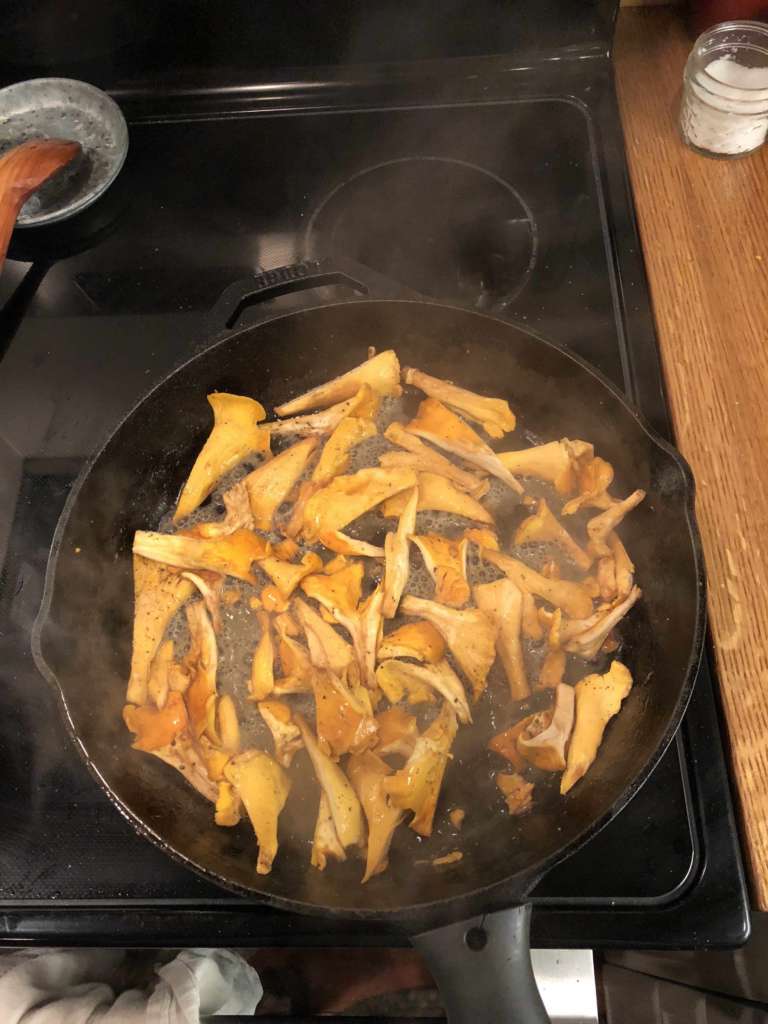
During this time of the year, the weather is some what hard to pinpoint with polarizing conditions often existing in close proximity; heavy rain falling in Hot Springs and simultaneously nothing but sunshine in Warm Springs.
But over the course of a week, you can almost count on seeing both sunshine and rain. If timed right, the delicate balance of these two elements ignites the forest floor with a spotted glow of orange. And although most folks more so celebrate the onset of White and Black Morels around April, Chanterelles remain the highest standard for edible mushrooms in our mountains. If Morels are filet mignon, Chanterelles are pork ribs; accessible, bountiful, and down right tasty. You don’t have to add much to make them hard to put down and they can accompany just about any dish.

Beyond their exquisite flavor and tendency to pop up in large swaths, they generally can only be confused with one other species in our wood. Beyond color similarities, the differences are easy to identify. Chanterelles generally have flute like formations instead of the toadstool “cap” structure. As they grow larger in size, they will feature “false gills” or forked wrinkles on their undersides. They do not grow in or on logs or rotting wood (their imposters do) rather rise from fairly open and shaded forest floor, featuring a dense bed of decaying leaves and organic matter. The last key feature is when sliced in half, they will be solid rather than hollow or chambered. This fact also helps determine which are fresh and which the bugs/slugs have beat you to…
For the next person and the next year, it’s responsible practice to leave a few where you harvest; try not to wipe out a whole patch. As for cooking, they are best enjoyed simply sautéed in butter, salt, and pepper. Lastly and maybe the most important rule, never tell anyone about your honey-hole unless you are fine not finding any next year!


